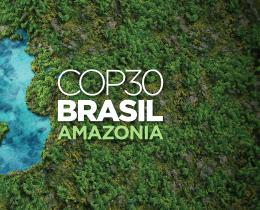Overfishing
An area or species is overfished when the fish are caught more quickly than they can reproduce. According to Save Our Seas, roughly three quarters of the world’s fish stocks are currently being overfished and 80 percent are either fully exploited or are declining. A full 90 percent of large predatory fish—including tuna, cod, swordfish, sharks, and other species—are gone.
At current rates of fishing, there is a very real possibility global fisheries will collapse by 2050. Considering that one-in-five humans relies on fish as their primary source of protein, as well as the broader effect on ocean ecosystems, it is not an exaggeration to say this would be catastrophic.
What can be done?
First, governments can work with scientists to set limits on the amount of each species that can be caught in a given area. Governments can also limit subsidies that favor destructive fishing methods, establish more protected marine areas, and step up enforcement to stop pirate fishing. Simultaneously, governments can create programs to mitigate the impact of these measures on fishing communities.
As individuals, we can urge our political representatives to take this issue seriously. We can also ensure that any fish we eat come from sustainable sources.
Several organizations are already monitoring which fish are currently the best choice. Download a copy of your region's Seafood Watch list from the Monterey Bay Aquarium in California (available online, in paper, or as an app). You can also check out Blue Ocean Institute's Seafood Guide, where you can search by species (including sushi names), as well as the Sierra Club's Safe Sushi app and the Safe Seafood app.
Acidification
Sea level rise is probably the first thing you think about when you consider climate change, but ocean acidification is a larger threat to the inhabitants of the sea.
Oceans absorb up to half of all the greenhouse gases in the atmosphere. As the oceans compensate for the increase in greenhouse gasses caused by humans, they become more acidic. Shellfish and coral cannot form their shells if conditions are too acidic. Acidic water also means more algae, which prevents kelp forests from growing, decreasing a key habitat for many fish species. Marine mammals, including whales and dolphins, are also affected, as a more acidic ocean interferes with their ability to communicate because it changes the way sound moves through the water.
Currently, acidification threatens vital habitat in areas where fish are crucial to local people's diets. In some places, particularly in the Coral Triangle of Southeast Asia, the loss of coral reefs would have dire consequences for the people living there.
Carbon dioxide emissions are now so high that some acidification of the ocean is unavoidable. The best hope is to reduce greenhouse gasses as quickly as possible. This requires global political and corporate commitment (well beyond what has been done so far), and equal effort by individuals.
What can you do right now? Here are the 3 biggest ways to reduce your environmental impact.
(Plastic) Pollution
Pollution in our oceans takes many forms, from agricultural run off that creates dead zones to dramatic accidents such as oil spills. Why focus on plastic pollution? Because 1) It’s a growing problem, and 2) It’s a problem where individual action can make a real difference.
Plastic is forever (more or less). It’s estimated that a plastic bag will take at minimum 500 years to biodegrade. Styrofoam will take even longer. A vivid reminder of this happened in April 2014 when, during a beach clean up in England, a yogurt container from the 1970s was discovered washed up on the shore, scraped and cracked, but otherwise entirely intact.
Of all the litter found in our oceans, at least 60 percent is plastic. In some places, plastics make up 90 percent of all trash. Due to ocean currents, plastic gets concentrated in certain areas of ocean known as gyres. You may have heard of the Great Pacific Garbage Patch. This is one of several gyres that pull in plastic in high concentrations.
Images of these floating islands of plastic give the impression the plastic problem in the ocean is from large pieces of plastic waste, but that's not the case. Often the plastic found by researchers includes many small pieces, referred to as microplastics. This poses extreme hazards for marine life—turtles go after plastic bags, mistaking them for jellyfish, while fish mistake smaller pieces of plastic for plankton, and seabirds and other mammals mistake plastic pieces as food. In some cases the plastic fills the animals' stomach, preventing them from eating, and they starve.
Our consumer choices can make a big difference in reducing the amount of plastic (of all shapes and sizes) that makes it into the ocean.
While it may not be possible to entirely eliminate our use of plastic, there are good, reusable nonplastic alternatives for most products. Want to learn more? Check out the Surfrider Foundation, the Plastic Pollution Coalition, and the Natural Resources Defence Council's (NRDC) Stop Plastic Pollution initiative in the video below.



